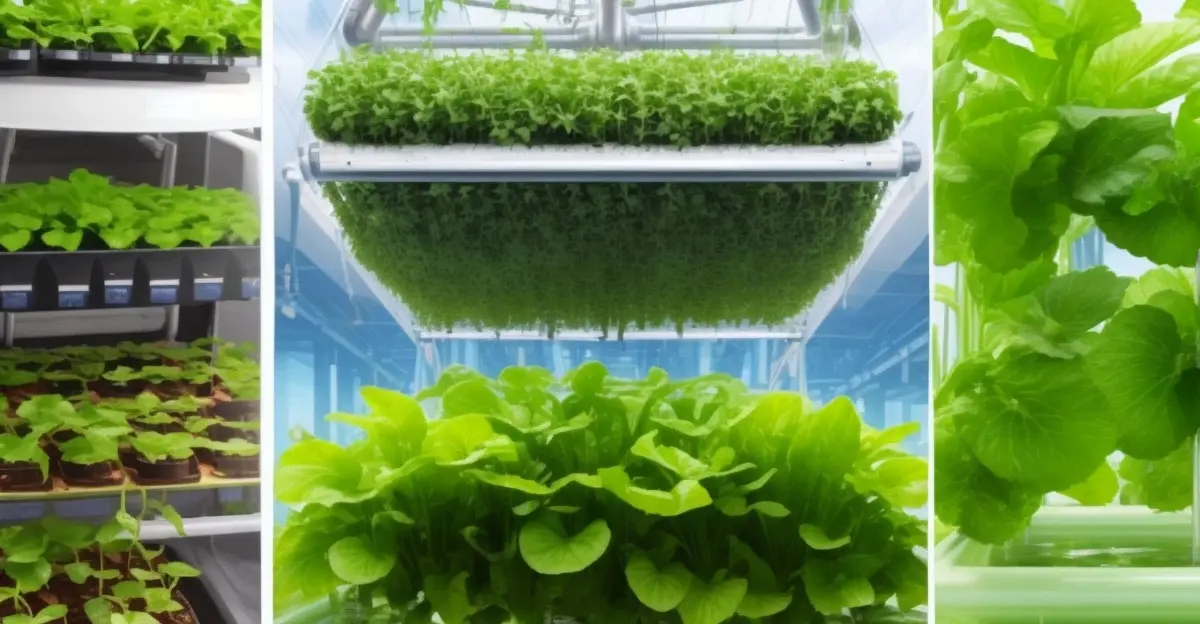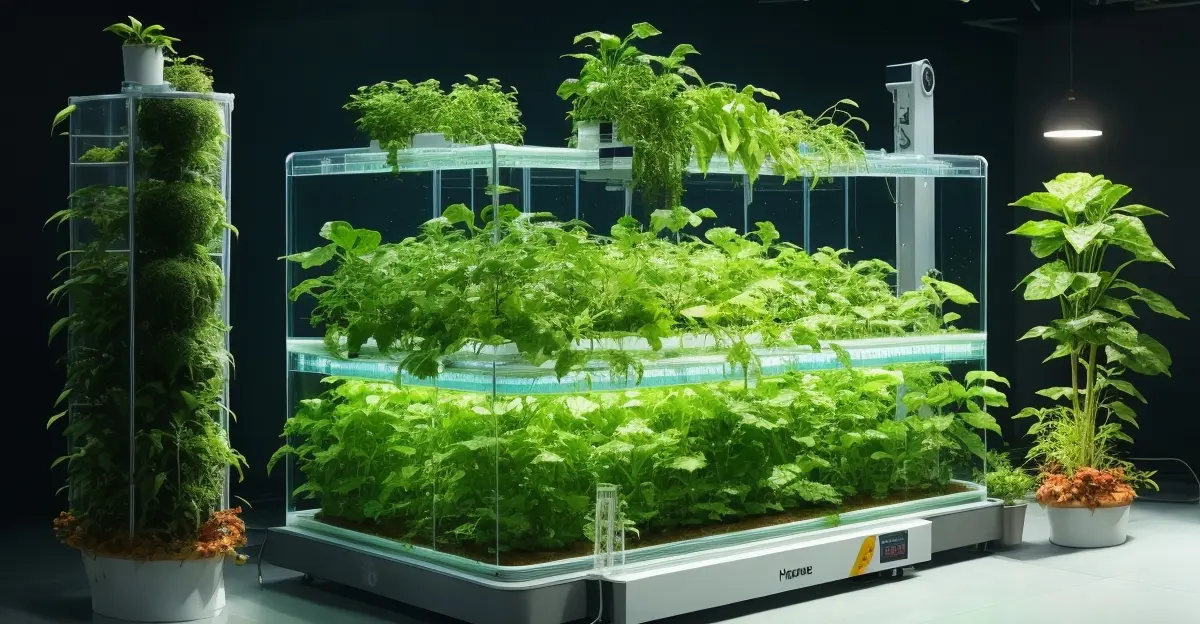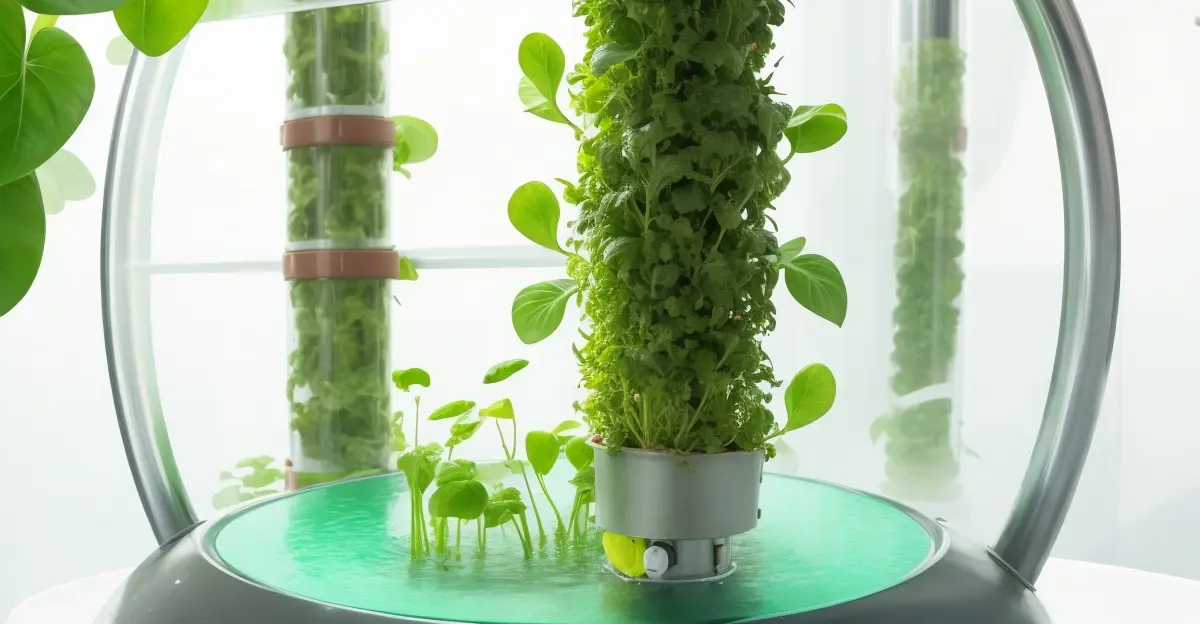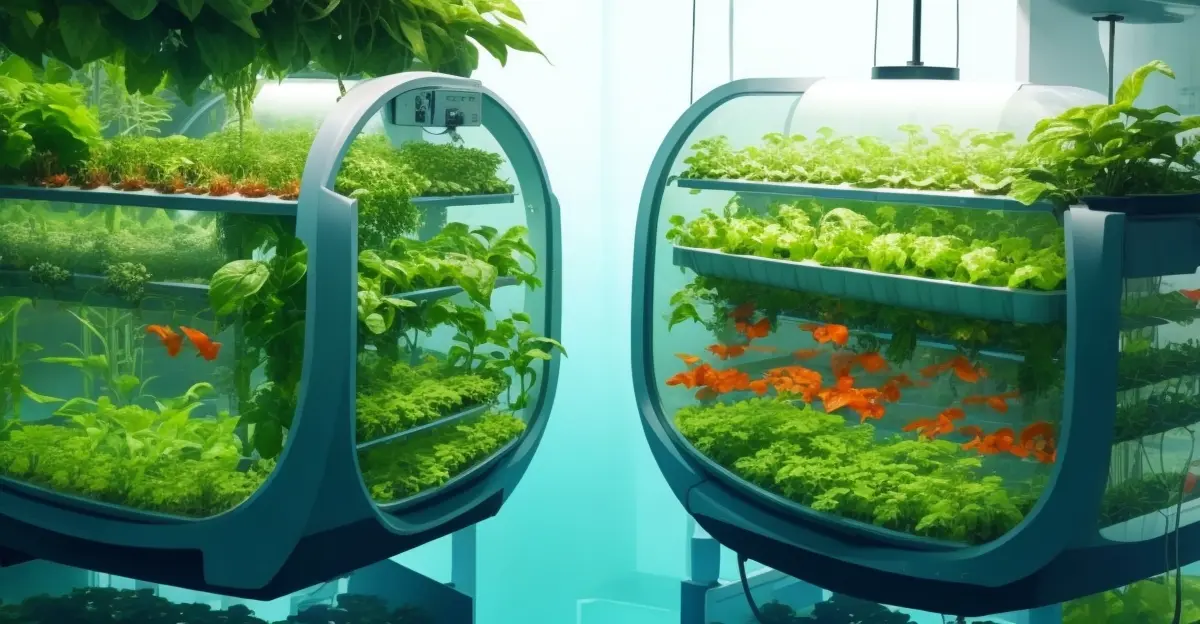Hydroponics vs Aeroponics vs Aquaponics: Ultimate Comparison

Imagine you could grow perfect heads of lettuce and plum tomatoes without ever getting dirt under your nails.
New soilless growing methods are making this vision a reality while using far less land and water than traditional farming.
Have you heard the buzz around hydroponics, aeroponics, or aquaponics yet and wondered what sets them apart?
As climate concerns and food demands rise globally, these techniques offer ways to cultivate more bountiful, nutritious crops using fewer precious resources.
This straightforward comparison of hydroponics vs aeroponics vs aquaponics empowers you to decide what’s best for you.
TL;DR Summary
How Hydroponics Works

Hydroponics involves cultivating plants without soil, anchored in inert mediums like perlite, gravel, or clay pellets instead.
Their roots are bathed in a nutrient-rich solution tailored to each crop’s needs.
Sensors monitor and automatically adjust factors like pH, temperature, and mineral levels for optimal plant health.
Submersible pumps circulate oxygenated water to nourish roots. Grow lights simulate sunlight’s wavelengths where natural light is lacking.
From leafy greens thriving along gently flowing channels in nutrient film technique (NFT) setups to tomatoes climbing vertical hydroponic walls, soilless systems let you grow more in less space.
Produce flourishes faster, free of soil-borne diseases and pests.
Hydroponics unlocks new potential even where water and arable land are scarce. These closed-loop systems reuse up to 90% percent less water than soil farming.
Hydroponics Pros and Cons
When cultivated in optimized hydroponic systems, crops enjoy faster growth cycles and higher yields. However, the soil-free approach also comes with downsides to consider.
Pros
Cons
How Aeroponics Works

Imagine your salad greens thriving in a misty chamber, roots dangling as they soak up a nutrient-rich fog.
This is the magic of Aeroponics.
Aeroponics cultivates plants in the air without any soil or media, suspending their bare roots inside an enclosed system.
High-pressure nozzles blanket the roots in a nutrient-rich mist at regular intervals within this protective, climate-controlled chamber.
Roots dangle freely below plants anchored in foam containers, eagerly absorbing both moisture and oxygen from the enveloping mist.
Any unused nutrient solution simply drains back into a reservoir tank to be recycled.
Automated pumps and timers create the ideal environment and free up farmers to focus on delicious results!
But disruption to lights, humidity controls, or failure to clean a clogged nozzle carries grave consequences.
Aeroponics Pros and Cons
Pros
Cons
How Aquaponics Works

Aquaponics combines aquaculture (fish farming) and hydroponics (cultivating plants in water) in a sustainable closed-loop system.
Fish waste from tanks provides an organic nutrient solution for plants grown in gravel beds.
In turn, the plants filter and purify the water, which recirculates back to the fish.
An aquaponics unit incorporates both fish and plant cultivation components:
The Symbiotic Process
The aquaponic process relies on the complementary relationship between the fish and plants:
- Fish produce waste containing ammonia, a nitrogen-rich compound.
- Helpful bacteria in the biofilter convert the ammonia first into nitrites, then into nitrates.
- These nitrates act as excellent plant nutrients and fertilizers.
- The water flows into the hydroponic grow beds, where plants absorb the nutrients as they grow. This filters and cleans the water.
- The purified water can then be pumped back into the fish tanks for reuse.
By leveraging this natural symbiotic cycle, aquaponics systems use 90-99% less water than soil-based farming.
They also avoid organic discharge into the surrounding environment thanks to the closed-loop recirculation.
Aquaponics Pros and Cons
Pros
Cons
Direct Comparison of Yields, Resource Use, and Efficiency Metrics
When it comes to the produce grown per square foot, no-soil-required systems blow traditional dirt plots out of the water.
But how do hydroponics, aeroponics, and aquaponics stack up against each other?
Crop Yield Comparison
| Farming Method | Comparison | Yield Differences |
| Aeroponics vs. Hydroponics (Potato) | Aeroponics had a higher yield. | 70% more in Aeroponics. |
| Aeroponics vs. Hydroponics (Lettuce) | Similar yields. | No significant difference. |
| Hydroponics vs. Conventional Agriculture | Hydroponics had a higher yield. | 20-25% more in Hydroponics. |
| Aquaponics vs. Hydroponics | Aquaponics had lower yields unless optimized. | Lower in Aquaponics unless optimized with added nutrients. |
One study found aeroponics had 70% higher potato tuber yield per plant compared to hydroponics.
However, another study found similar yields between aeroponics and hydroponics for lettuce.
Hydroponic setups still typically produce 20-25% more than conventional agriculture.
Aquaponics offers twin harvests from both fish and plants. But crop yields can be lower than hydroponics unless optimized with added nutrients to complement fish waste.
KEY TAKEAWAY: While more research is needed to accurately compare them with each other, soilless systems like hydroponics, aquaponics, and aeroponics generally have much higher yields than conventional agriculture.
Sustainability and Resource Conservation
Soilless systems all slash water needs compared to outdoor fields. Aquaponics and aeroponics are the most water-wise, cutting usage by 90-95%.
Aeroponics also minimizes fertilizer, using up to 60% less since mist directly targets roots.
Here’s a table comparing these growing mediums based on key sustainability factors:
| System | Nutrient Efficiency | Energy Use | Waste Production |
| Hydroponics | Precise control over nutrient levels leads to high absorption rates. | Can use renewable energy like solar power. | Minimal waste if systems are closed-loop. |
| Aeroponics | Targeted nutrient delivery to roots gives excellent efficiency. | Energy demands can be high for lighting and misting systems. | Little waste if water and nutrients are fully recaptured. |
| Aquaponics | Nutrient recycling from fish waste reduces the need for fertilizers. | Can use renewable energy, but electricity demands vary by system size. | Minimal solid or liquid waste in closed systems. |
Growth Rates
Aeroponics and aquaponics generally have faster growth rates than hydroponics. Aeroponics was found to have 2.46% faster growth for some plants.
Aquaponics had the fastest tested growth rate, with plants growing 4 times faster than hydroponics.
All three soilless growing methods have much faster growth rates than traditional soil farming. Hydroponics grows 30-50% faster than soil.
Startup and Operating Cost Analysis
The initial setup costs vary greatly based on factors like system scale, degree of automation, supplementary lighting, and monitoring capabilities.
Operating costs fluctuate too depending on electricity, water, and consumable use.
Here is a comprehensive table analyzing the estimated startup and operating costs for hydroponics, aeroponics, and aquaponics systems:
| System | Startup Costs* | Operating Costs* |
| Hydroponics | $50,000 – $500,000 depending on scale. Includes costs for equipment like grow lights, irrigation systems, climate control, etc. | Labor is the biggest cost, averaging 57% of the operating budget. Other costs include seeds, nutrients, packaging, and utilities. |
| Aeroponics | $10,000 to $100,000 for construction and equipment. | Maintenance and repair of equipment, utilities, labor, and marketing are the main costs. |
| Aquaponics | $100,000 – $500,000 depending on scale. Includes greenhouse, tanks, and plumbing for integrated fish and plant system. | Electricity, fish feed, water, and labor are main ongoing costs. Estimated at $1,000 – $5,000 monthly for a medium-scale system. |
*The startup and operating costs are estimated. In reality, they may vary based on size, complexity, and equipment.
In terms of profitability, costs can be lower for hydroponics and aquaponics at scale compared to aeroponics.
However, aeroponics may produce higher yields.
Profitability depends greatly on the local market and being able to sell produce at reasonable prices.
Smaller systems generally have higher unit costs but faster payback periods on the initial investment
Overall economic feasibility is still uncertain due to a lack of long-term operating data.
Ease of Adoption for Each System
When it comes to accessibility for beginners, hydroponics and aquaponics tend to have the lowest barriers to starting out.
Aeroponics requires overcoming the steepest learning curve.
Equipment
Hydroponic systems need basic components like nutrient reservoirs, grow lights, and pumps which are relatively simple to install even for first-timers.
Aquaponic setups incorporate additional fish tanks and biofilters.
Aeroponic units demand the most complex components like misters, foggers, and environmental controls to nourish plants suspended in the air.
Expertise
Basic knowledge of plant nutrition and water quality factors is sufficient to operate hydroponics for most growers.
Aquaponics also has a gentle learning curve but requires both plant and aquaculture knowledge to balance the system.
Aeroponics has the steepest learning demands, requiring mastery of equipment, plant physiology, and inputs to avoid crop crashes.
Maintenance
While hydroponics needs daily monitoring and solution management, overall maintenance time is moderate.
Aeroponics requires the most intense, frequent monitoring to pinpoint any fluctuations and avoid fatal dry-outs.
Aquaponic systems need the care of both fish and plants, making labor needs more intensive than hydroponics. One study found aquaponics had 46% labor costs of total operating expenses versus 40% for hydroponics.
Key Failure Points
Issues can arise in hydroponics and aquaponics from water quality imbalances, pests, pipe leaks, and disease outbreaks.
But effects are generally not catastrophic.
Aeroponic systems face the highest risks as even minor lapses in the misting equipment operation can rapidly kill entire plant inventories.
With lower equipment complexity, gentler learning curves, and more room for error, hydroponics and aquaponics have the most beginner-friendly adoption profiles.
Conclusion — Summary Based on Priorities
When weighing up hydroponics, aeroponics, or aquaponics, it’s helpful to reflect on your key aims and priorities.
Your needs likely revolve around maximizing:
Crop Yields Favor Aeroponics: For the absolute highest density yields and most rapid plant growth, aeroponics leads the pack.
Costs Favor Hydroponics: If limiting expenses is vital, hydroponics strikes an optimal balance. Large-scale vertical hydroponic farms also benefit from economies of scale.
Sustainability Favors Aquaponics and Aeroponics: Seeking sustainable closed-loop production and water conservation? Aquaponics and aeroponics both reuse a great deal of nutrients and H2O.
Weighing all factors, it’s clear each soilless technique has strengths aligned with different priorities.
Which one impressed you the most?
Meet your guide
Dhruvir Zala